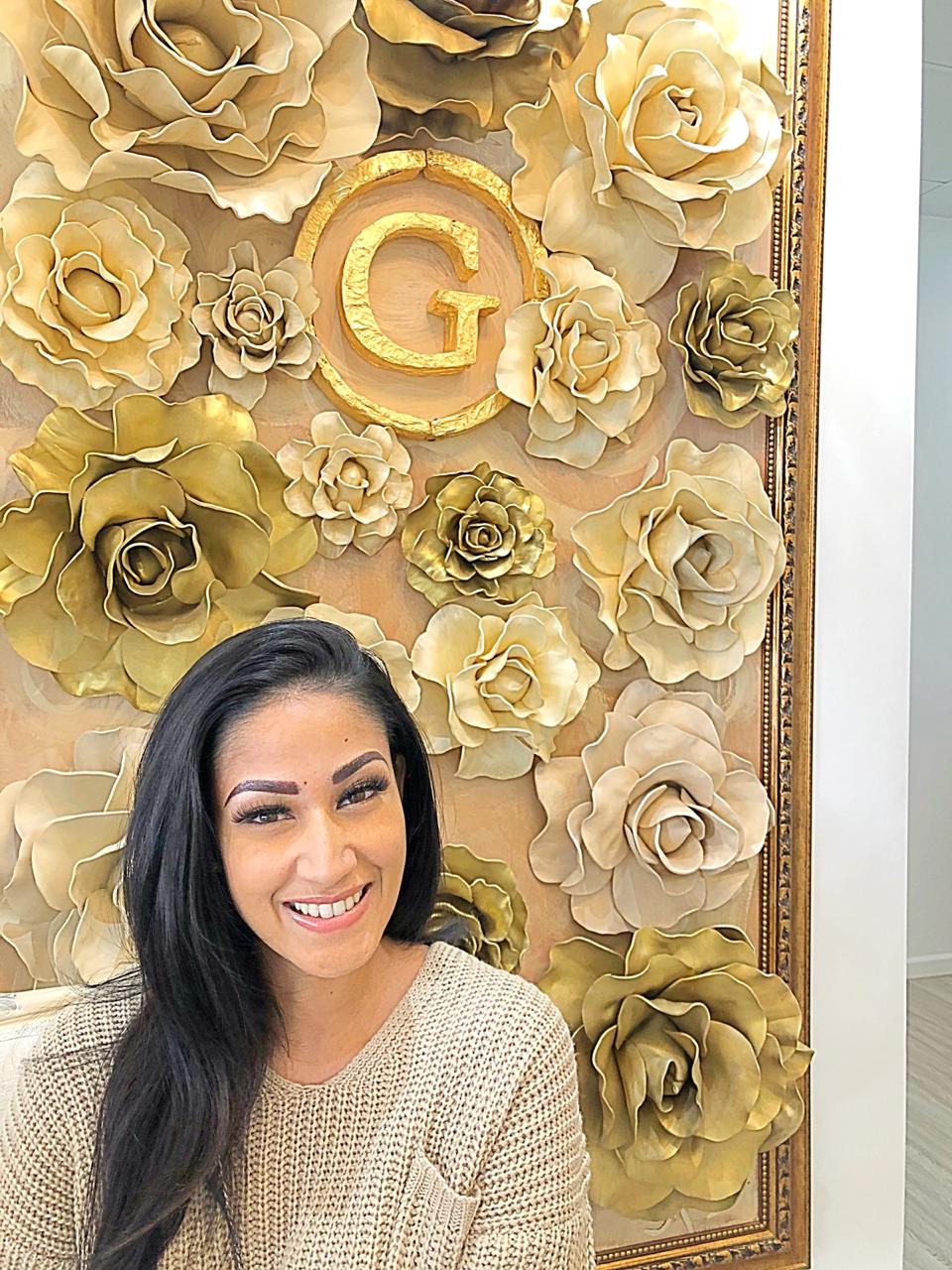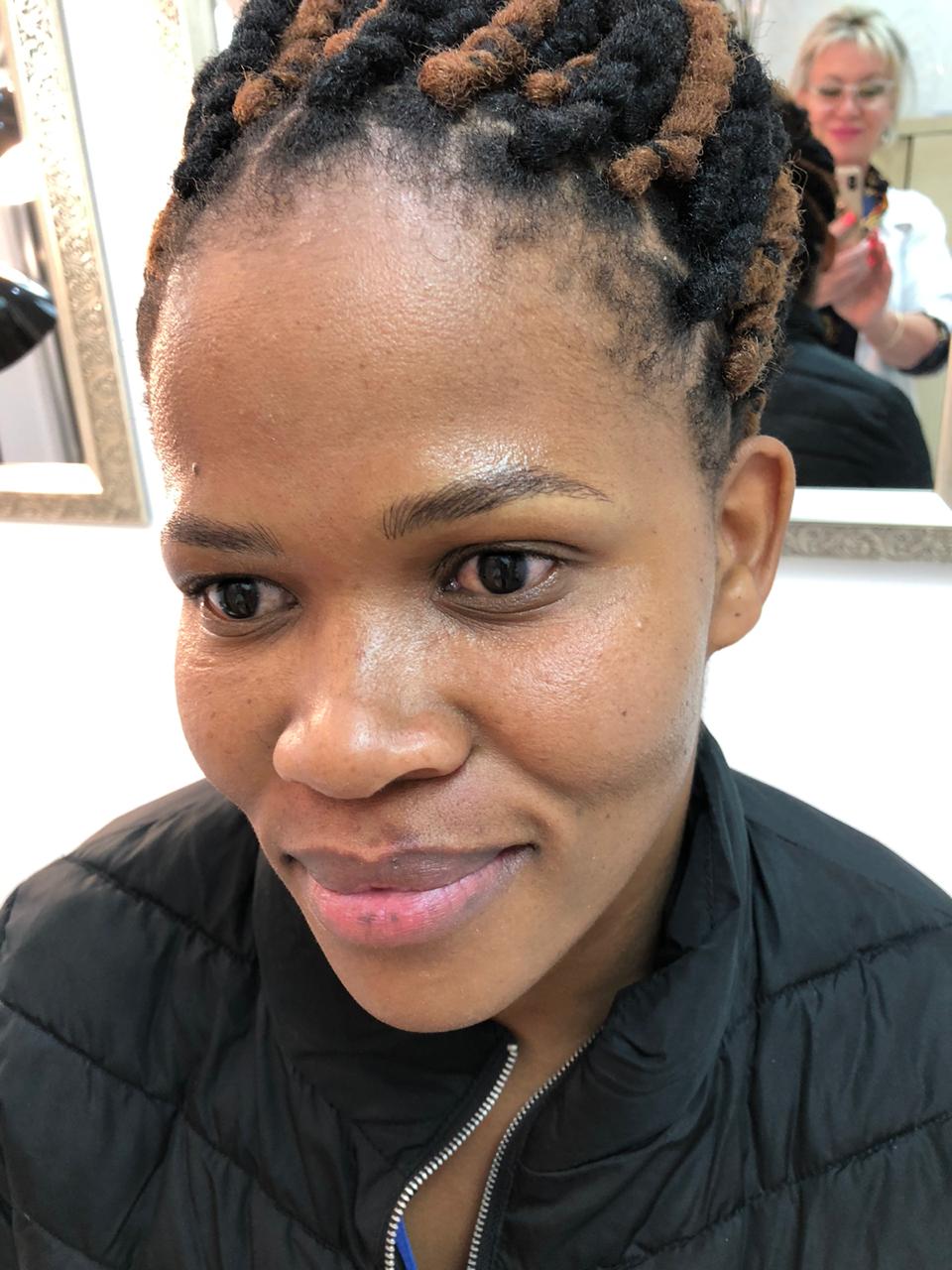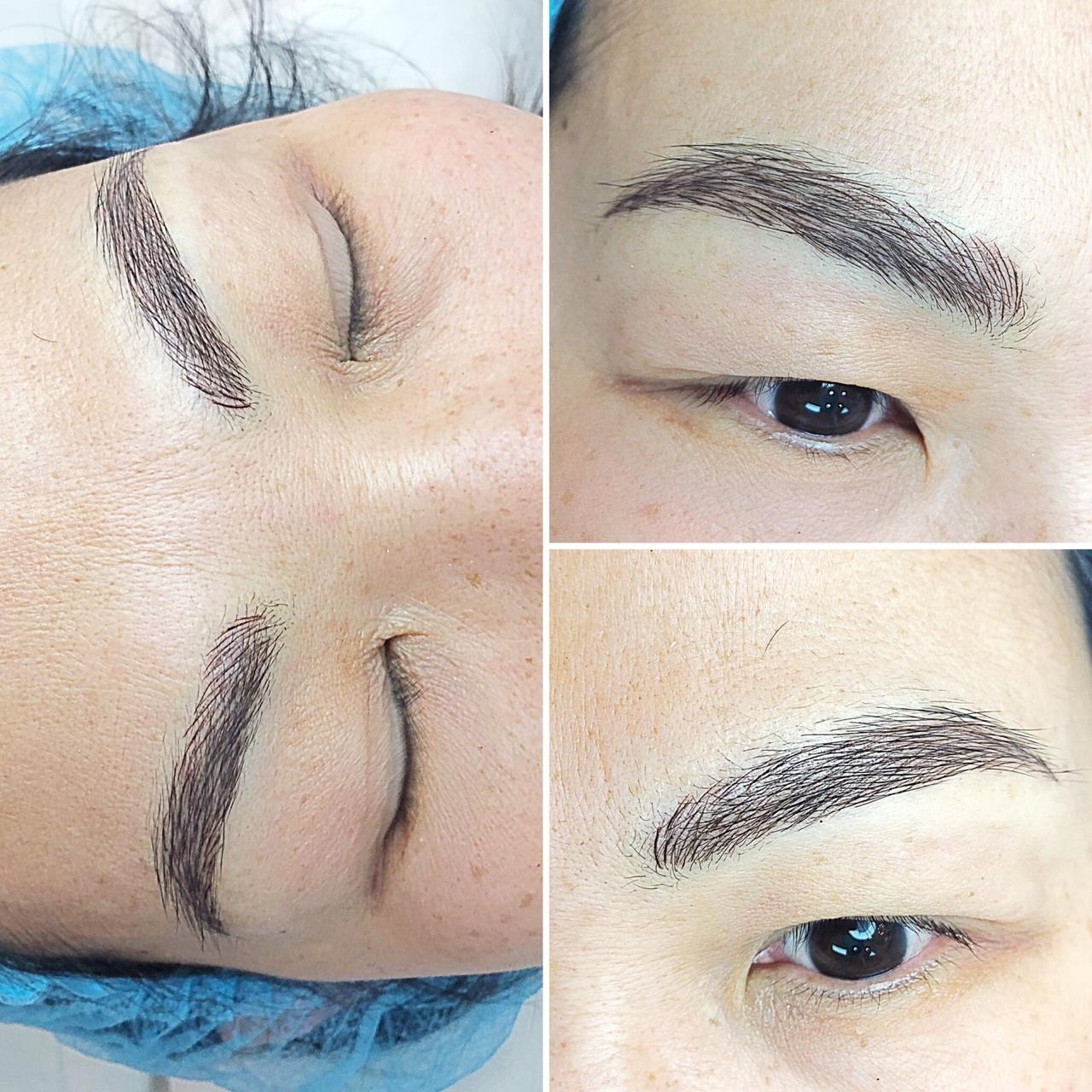While Microblading’s rise to fame has been relatively fast, not everyone fully understands the actual procedure and what this advanced technique is realistically able to deliver. Here is our best advice and potential pitfalls for clients considering microblading, in order to make an informed decision.
Who will benefit from Microblade Eyebrows?

Most men and women of all ages and every skin tone have one eyebrow that is longer, shorter, thicker, thinner, higher, lower than the other. Very, very seldom are the two sides of the face in perfect symmetry. As the Microblade Eyebrow procedure delivers such realistic and natural looking ‘hair’ – this is the perfect solution to correct any symmetry issues. Ladies who have over plucked their brows during their youth, discovered, eventually, to their dismay, that the hair does not grow back. Microblade Eyebrows restores the lost brow density they once enjoyed! Anyone with scarring through the brow area, or suffering hairloss (including varying stages of alopecia) – will hugely benefit from the natural appearance that Microblade Eyebrows could deliver. There is a definite association of youthfulness with a fuller brow that we all once enjoyed.
Microblade tools and Microblades


The microblade tool is a sterilisable metal manual pen (as opposed to an electric device) designed to firmly grip the microblade in the top (head) section of the tool. The flat back part of the ‘blade’ is inserted into the pen at a slight angle so as to make it easier to keep the sharp edge of the blade at exactly 90 degrees to the skin. Many clients are surprised to find out that the microblade itself is not in fact a scalpel-like blade – but rather, a configured set of either 7, 12 or 14 (sometimes sets of 17, 18 or 21 even) micro-pins that are tightly soldered together at the base.
A plastic (or metal in the case of hard blades) sheath is placed around the flex blades in order to hold the micro-pins tightly together and the blade is sharpened on both sides into a slight curve design. In the case of the U-shaped microblade, as the name would suggest, it is sharpened into a U-shape. The microblades are sterilised by gamma rays and should still be unopened in the sealed packaging on your arrival at the procedure appointment. Ensure that your artist opens the sealed blade in front of you.
Consultation and Preparation Process

A thorough consultation is essential to ensure the client’s needs are met:
1. Completed paperwork and consultation prior to the microblade process is important.
2. The skin has to be thoroughly cleansed and prepped with a good quality topical anaesthetic for approximately 20 minutes.
3. Anaesthetic is then removed allowing the artist 10 to 12 minutes to draw a precise and defined template outline of the eyebrow shape, working as far as possible within the natural brow shape, the brow bone structure, facial shape and client’s desired design. Usually slight improvements are achieved such as gently raising the arch focus section, slight elevation of the tail and/or to generally improve symmetry of the two eyebrows.
4. The client checks the shape, symmetry and overall design and if necessary, minor changes are made before approving the design. The designing element should be done whilst the client is sitting up, as depleted collagen and lax connective tissues could skew symmetry – compromising the end result.
Is Microblading for all?
Despite popular belief, not everyone is a suitable candidate for microblading. Microblading is not a good idea for 3 different types of clients. Regretfully clients with super thin skin, very oily, porous skin and those with very dark (Fitz 6+) skin types. The very thin skins are way too delicate and usually lack strong supportive tissues required to ‘hold’ the strokes. Oily, porous skin-types tend to heal with a somewhat ‘smudged’ appearance – the end result strokes are seldom crisp. Very dark-skinned clients (typically central African or around the equator regions) – as soon as the microblade strokes have healed fully and the melanin in the area has been restored, the strokes will no longer be visible – not even if black (another big no-no!) pigment is used. These three skin types would be best suited to either the ombre or powder brow options, which will predictably deliver gorgeous results.
Research prior to procedure
It is crucial that you do thorough homework prior to the appointment. Each artist has their own interpretation of a beautiful eyebrow – some like downward flowing strokes and others prefer upward sweeping strokes – and some do a combination of the two! Some artists insist on small strokes at the bulb and others prefer slightly longer strokes to set the template. Microblade eyebrows are essentially subject to the artist’s interpretation and is certainly not an exact science or a one-size-or-style-fits-all exercisel. Be sure to zoom in on the pictures of microblading, both immediately after AND healed. After all, it is the healed result that you, the client, will be sporting for the next 12 months to 3 years! Check to see the stroke design – there should be no crisscrossing of strokes and the tail part of the brow should not appear ‘darker’ than the body (this is generally an indication that the artist has not received sufficient training). It is imperative that clients select an artist with whom they feel completely comfortable in order to deliver as close as possible to your idea of the dream eyebrow.

The Microblade Procedure



Exciting! Now the real creativity begins! Every hair is placed with the utmost precision effectively laying tiny tracks of personalised pigment colour in uniformly shaped micro-channels created with the microblade tool. The artist will begin placing every stroke with great precision and with enhanced mastery in order to create a beautiful flow of ‘hair’ throughout the eyebrows. First capturing the template shape and then gently filling in, hair by hair, until a gorgeous full eyebrow has been achieved. Your chosen service provider should be sufficiently educated and experienced to know precisely at what depth to place the microblade strokes for maximum crisp hair-like results. We teach our students to use a specific good 3-way stretch and employ three of our five senses whilst placing strokes. The true artist will use sight (there should never be more than pin-prick bleeding), feel (a slight vibration in the stretching hand) as well as hear (a crisp popping ‘grrtsch-like’ sound) – this is how to identify that the strokes are being placed in exactly the correct depth. Strokes that are placed too deeply in the skin will bleed way too much, essentially causing the pigment to ‘wash’ out with the flow – ultimately delivering a poor result. Furthermore, strokes that are placed too deeply will blur and not be crisp AND they are most likely to become grey or dark blue-ish in colour once healed. You will obviously be able to see the individual microblade strokes – however, there should not be any areas of wide gaping skin within any strokes.
On the opposite end of the depth spectrum – should the strokes be placed too superficially (i.e not deeply enough), they will appear uneven, sort of spotty, the strokes will not hold – ultimately a re-do will be required. Too shallow is by far the less traumatic alternative to placing strokes too deep, as correction at the 6-week refinement is relatively simple. For those clients where the artist has placed the strokes too deep – in most cases, the best solution would be laser removal by an expert in the field. The very reason why it is so important to do your research thoroughly! Suffice to say that if you have any suspicion of the equipment or disposable items appearing to have been tampered with or previously used, it is your right to immediately decline the procedure.
Client Comfort
Professional artists will ensure your complete comfort throughout the procedure with the application of a powerful secondary anaesthetic in between each pass or ‘row’ of hairs. The secondary anaesthetic should contain a minuscule (0.02%) amount of epi (a topical vasoconstrictor) ensuring that all the vessels in the area are constricted – thereby inhibiting all body fluid. A combination of secondary anaesthetic gel together with pigment will be left to saturate for 5 minutes once completed, for maximum retention.
For those clients who suffer with varying degrees of Alopecia – it would be in your best interest to ensure that your chosen artist knows how to create the illusion of 3 dimensional brow hair. This is achieved with clever use of different shades of pigments together with a powder shadowy background, which when strategically placed, delivers the fantastic illusion of full-on natural statement eyebrows.

Recovery and Healing

There is no real recovery downtime once the procedure is completed. During the healing phase, your eyebrows will initially appear much darker, however they will lighten considerably over the next 14 to 21 days as the light crust that appears after the procedure is allowed to naturally exfoliate. It is essential that the client does not allow the newly microbladed eyebrows to become saturated with water, but rather be kept completely dry until total healing is complete. At Permanent Makeup by Gwendoline, as a last step, we apply a thin film of durable barrier cream and hand each client an aftercare gift bag containing instructions for optimum healing and a soothing balm. It is important to attend a refinement 6 weeks post procedure, to perfect the outcome and extend the lifespan of the brows.
Semi permanent or permanent?
Any time a pigment is placed into the upper dermis of the skin – it is considered permanent. Having said that, typically Microblade Eyebrows do not enjoy the same longevity as other permanent makeup procedures due to the minuscule tracks that the pigment lies in. The entire procedure and pigment saturation is very different to traditional permanent makeup. As the layers of skin go through cycles of renewal (roughly every 28 days) the pigment is moved slowly up to the surface where it will naturally be subject to normal exfoliation. Realistically, depending on individual lifestyle habits, one may expect anywhere from 1 year to 3 years of happy wear from professionally applied Microblade Eyebrows.
A final piece of advice, please don’t ‘bargain shop’ when it comes to your face. Excellent quality pigments, the best anaesthetics and equipment are all imported and are therefore not cheap. It is in the client’s best interest to save up in order to afford the procedure to be carried out by the most professional and ethical artists in the industry.


Gwendoline Johnston owns Permanent Makeup by Gwendoline and practices as a Permanent Make-up Specialist at her studios in Johannesburg. Gwendoline attained her Masters Certification from the American Institute of Intradermal Cosmetics in October 2013. She has kept fully up to date with ongoing study in the latest techniques and industry trends – obtaining over eighteen certificates and diplomas both locally in South Africa and internationally – regularly attending Advanced Permanent Makeup training seminars, master classes, conferences and workshops.
Gwendoline’s vast experience attained over the past eighteen years, together with a thorough understanding of skin and colour, has placed her in the confident position to teach, advise and perform in all areas of advanced permanent make-up, including para-medical applications. Permanent Makeup by Gwendoline is affiliated with local and international Plastic Surgeons, Dermatologists, Specialists and Medical Spa’s.
“Throughout my career, I have remained committed to delivering excellence. I have a deep passion for my craft and genuine care for my clients, which when teamed with the highest level of professionalism, my aim is to deliver unparalleled performance within the vibrant and ever-evolving world of permanent makeup.”
We love to hear from you!
Please email any questions you may have to: gwendoline@permanentmakeup.co.za